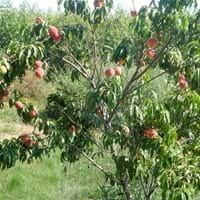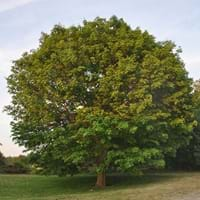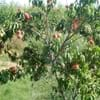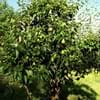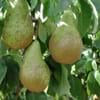Life Span
Perennial
Perennial
Types
Tuscany, Royal Gem, Flavortop, Crimson Baby, Fantasia
Bigleaf Maple, Black Maple, Silver Maple
Number of Varieties
Not Available
Habitat
Warmer regions
Forest edges, Open areas, Roadsides, wastelands
USDA Hardiness Zone
5-9
3-7
Sunset Zone
H1, 1a, 1b, 2a, 2b, 3a, 3b, 6, 7, 8, 9, 10, 11, 12, 13, 14, 15, 16, 18, 19, 20, 21, 22, 23, 24
A2, A3, 1a, 1b, 2a, 2b, 3a, 3b, 4, 5, 6, 7, 8, 9, 14, 15, 16, 17
Habit
Oval or Rounded
Oval or Rounded
Flower Color
White, Red, Light Pink, Rose
Lemon yellow, Yellow green, Chartreuse
Flower Color Modifier
Bicolor
Bicolor
Fruit Color
White, Yellow, Red, Pink, Peach
Green, Tan, Sandy Brown
Leaf Color in Spring
Green
Green, Light Green
Leaf Color in Summer
Green
Green, Dark Green
Leaf Color in Fall
Green
Yellow, Red, Lemon yellow, Yellow green
Leaf Color in Winter
Light Green
Not Available
Leaf Shape
Long, simple, curved and folded
Maple shaped
Plant Season
Spring
Spring, Summer, Fall
Sunlight
Full Sun
Full Sun, Partial Sun, Partial shade
Type of Soil
Loam, Sand
Clay, Loam, Sand
The pH of Soil
Acidic, Neutral
Acidic, Neutral, Alkaline
Soil Drainage
Well drained
Average
Bloom Time
Spring
Early Spring, Spring
Tolerances
Drought
Pollution, Drought, Soil Compaction
Where to Plant?
Ground
Ground
How to Plant?
Budding, Grafting, Seedlings
Stem Planting
Plant Maintenance
Medium
Medium
Watering Requirements
Average Water Needs, Requires regular watering
Do Not over Water
In Summer
Lots of watering
Lots of watering
In Spring
Moderate
Moderate
In Winter
Average Water
Average Water
Soil pH
Acidic, Neutral
Acidic, Neutral, Alkaline
Soil Type
Loam, Sand
Clay, Loam, Sand
Soil Drainage Capacity
Well drained
Average
Sun Exposure
Full Sun
Full Sun, Partial Sun, Partial shade
Pruning
Remove damaged leaves, Remove dead branches, Remove dead leaves
Remove damaged leaves, Remove dead leaves
Fertilizers
All-Purpose Liquid Fertilizer
Doesn't require fertilization when grown in rich soil
Pests and Diseases
Red blotch
Decline, Girdling Roots, Red blotch, Verticillium Wilt, Wetwood
Plant Tolerance
Drought
Drought
Flowers
Showy
Insignificant
Flower Petal Number
Single
Single
Fragrant Flower
Insignificant
No
Foliage Texture
Medium
Coarse
Foliage Sheen
Glossy
Matte
Attracts
Bees, Hummingbirds, Insects
Not Available
Allergy
Anaphylaxis, Asthma, Bronchial-constrictions, Food Allergy, Urticaria
Not Available
Aesthetic Uses
Beautification
Showy Purposes
Beauty Benefits
Good for skin, Making cosmetics
Not Available
Environmental Uses
Air purification
Air purification
Medicinal Uses
Aphrodisiac, Blood stasis and neurodegenerative diseases, Cancer, cholesterol-lowering, Combats Stress, Culinary Usage, Diuretic, Hair Loss, Hypokalemia, Obesity, Skin Disorders, Stomach pain, Weight loss
Not Available
Part of Plant Used
Bark, Flowers, Leaves, Seeds
Whole plant, Wood
Other Uses
For making oil, Gum, Used as a dye, Used as Ornamental plant
Used as Ornamental plant, Used for its medicinal properties
Used As Indoor Plant
No
No
Used As Outdoor Plant
Yes
Yes
Garden Design
Container, Fruit / Fruit Tree, Topiary / Bonsai / Espalier
Feature Plant, Shade Trees, Street Trees
Botanical Name
PRUNUS persica nectarine
ACER platanoides
Common Name
Nectarine, Hardy Red
Norway Maple
In Hindi
आड़ू
नॉर्वे मेपल
In German
Dwarf Nectarine
Spitzahorn
In French
Dwarf Nectarine
Norvège Maple
In Spanish
Dwarf Nectarine
Noruega arce
In Greek
Dwarf Nectarine
Νεροπλάτανος
In Portuguese
Dwarf Nectarine
Noruega bordo
In Polish
Dwarf Nectarine
klon zwyczajny
In Latin
Hardy Red
Acer platanoides
Phylum
Magnoliophyta
Magnoliophyta
Class
Magnoliopsida
Magnoliopsida
Family
Rosaceae
Aceraceae
Clade
Angiosperms, Eudicots, Rosids
Angiosperms, Eudicots, Rosids
Tribe
Not Available
Not Available
Subfamily
Not Available
Not Available
Number of Species
Not Available
Not Available
Importance of Dwarf Nectarine and Norway Maple
Want to have the most appropriate plant for your garden? You might want to know the importance of Dwarf Nectarine and Norway Maple. Basically, these two plants vary in many aspects. Compare Dwarf Nectarine and Norway Maple as they differ in many characteristics such as their life, care, benefits, facts, etc. Every gardener must at least have the slightest clue about the plants he wants to plant in his garden. Compare their benefits, which differ in many ways like facts and uses. The medicinal use of Dwarf Nectarine is Aphrodisiac, Blood stasis and neurodegenerative diseases, Cancer, cholesterol-lowering, Combats Stress, Culinary Usage, Diuretic, Hair Loss, Hypokalemia, Obesity, Skin Disorders, Stomach pain and Weight loss whereas of Norway Maple is Not Available. Dwarf Nectarine has beauty benefits as follows: Good for skin and Making cosmetics while Norway Maple has beauty benefits as follows: Good for skin and Making cosmetics.
Compare Facts of Dwarf Nectarine vs Norway Maple
How to choose the best garden plant for your garden depending upon its facts? Here garden plant comparison will help you to solve this query. Compare the facts of Dwarf Nectarine vs Norway Maple and know which one to choose. As garden plants have benefits and other uses, allergy is also a major drawback of plants for some people. Allergic reactions of Dwarf Nectarine are Anaphylaxis, Asthma, Bronchial-constrictions, Food Allergy and Urticaria whereas of Norway Maple have Not Available respectively. Having a fruit bearing plant in your garden can be a plus point of your garden. Dwarf Nectarine has showy fruits and Norway Maple has no showy fruits. Also Dwarf Nectarine is not flowering and Norway Maple is not flowering . You can compare Dwarf Nectarine and Norway Maple facts and facts of other plants too.
